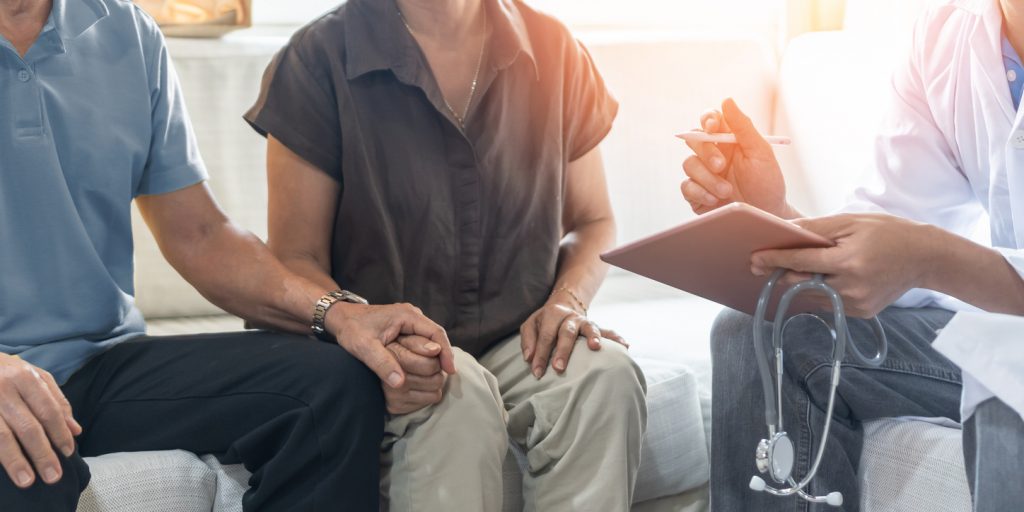Developers of rare disease drugs are continually looking for ways to help clinicians reduce the time to correctly diagnose patients and identify those more appropriate for particular therapies. To properly diagnose patients with all types of conditions, clinicians should look beyond what is immediately in front of them and probe to find the right answer.
This is no easy task given the time pressures clinicians are under. A recent study found that primary care providers spend an average of 18 minutes with each patient. In addition, lack of knowledge about diagnosis and management guidelines can make it difficult for clinicians to diagnose patients with rare cancers and blood disorders. Closing this knowledge gap is essential to improving patient outcomes.
We caught up with Edward Neilan, MD, PhD, Chief Medical and Scientific Officer at the National Organization of Rare Disorders (NORD) to discuss the challenges around the diagnostic odyssey.
Today’s Diagnostic Challenges
Detecting rare conditions is particularly troublesome. “There are about 7,000 rare diseases, and new ones are being discovered each week, so no one can recognize them all,” explained Dr. Neilan. The National Organization of Rare Disorders found roughly 1 in 13 people are living with an undiagnosed condition, and it typically takes five years or longer to receive the correct diagnosis.
Nearly half of clinician learners who attended the CME/CE program “Spotlight on Rare Cancers” reported that diagnosis is their most significant challenge in treating rare disease. There is often a five- to seven-year delay in the diagnosis of endocrine tumors, for example, because the symptoms presented are so similar to gastrointestinal issues.
Raising the index of suspicion is crucial for improving outcomes for patients. “In the case of cancer, the earlier the diagnosis occurs, the greater the chance of successful treatment,” said Dr. Neilan. “Life-saving therapies can often give patients a much better prognosis.”
Innovative education and collaboration initiatives can help clinicians with these diagnostic hurdles in a number of ways:
- Elevating awareness of targeted therapies. “Gene therapies and enzyme therapies make it increasingly possible to treat conditions that were previously untreatable, so there’s even more of an incentive to find the exact cause of a patient’s symptoms,” said Dr. Neilan. A 2020 survey found 63% of healthcare providers reported being unaware of FDA-approved gene therapies. Continuing medication education can be an exposure point to raise clinical awareness of the potential for personalized treatment where none existed before.
- Increasing exposure to rare conditions. To help decrease the time to diagnosis and improve the quality of care, PlatformQ Health and NORD have produced 47 educational sessions for healthcare providers, patients, and caregivers in collaboration with numerous advocacy organizations, such as the National Hemophilia Foundation, Cure SMA, and Parent Project Muscular Dystrophy. Bringing together advocates and clinicians from these organizations exposed providers to conditions they may not have encountered before. The programs included “tethered” education, which introduced providers to firsthand patient experiences. 69% of healthcare providers who participated in the sessions reported that the programs had a positive impact on their clinical practice.
- Support from advocacy organizations. Advocacy organizations can serve as a resource for physicians when they are having trouble honing in on a diagnosis. Physicians can connect with an advocacy organization that focuses on the types of symptoms the patient is having, who may be able to connect them with the right specialist. Advocacy organizations often have relationships with specialists at centers of excellence focused on research, who will go the extra mile to seek a precise diagnosis.
Moving Forward
There is no one simple answer to shortening the diagnostic odyssey, and the reality is that this challenge is not likely to go away. “No one clinician will have encountered every type of condition, so collaboration plays a crucial role when seeking a diagnosis,” said Dr. Neilan
Continuing medical education and communication with the right specialists and advocacy organizations can often provide the resources needed to support patients and caregivers. For those in search of answers, this knowledge sharing can bring hope to patients and providers alike.

